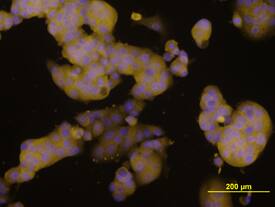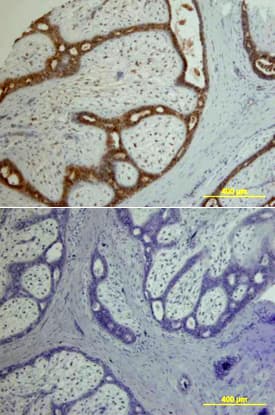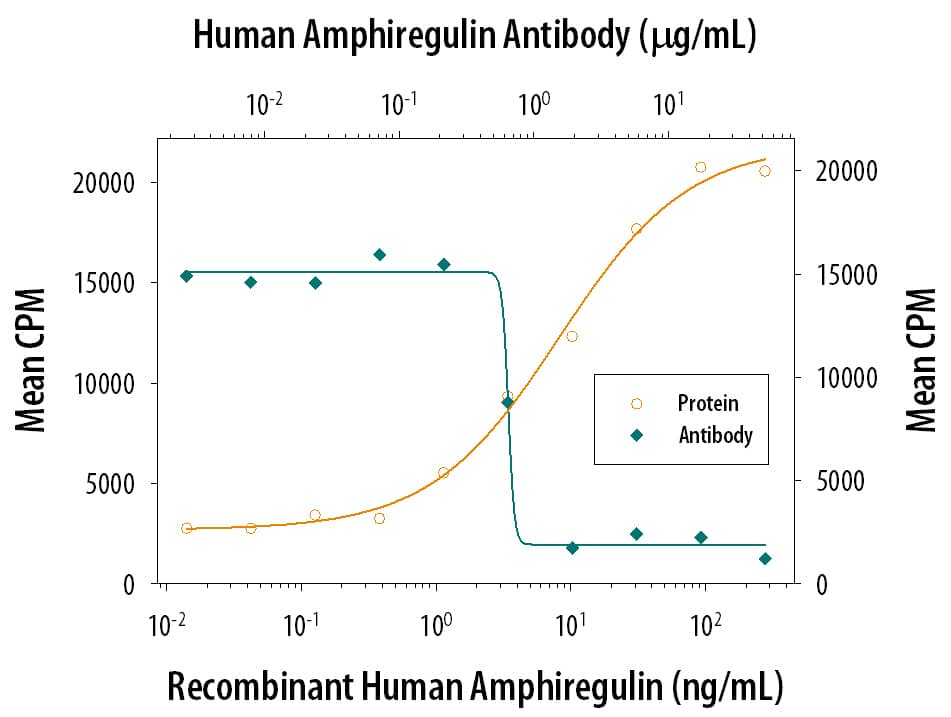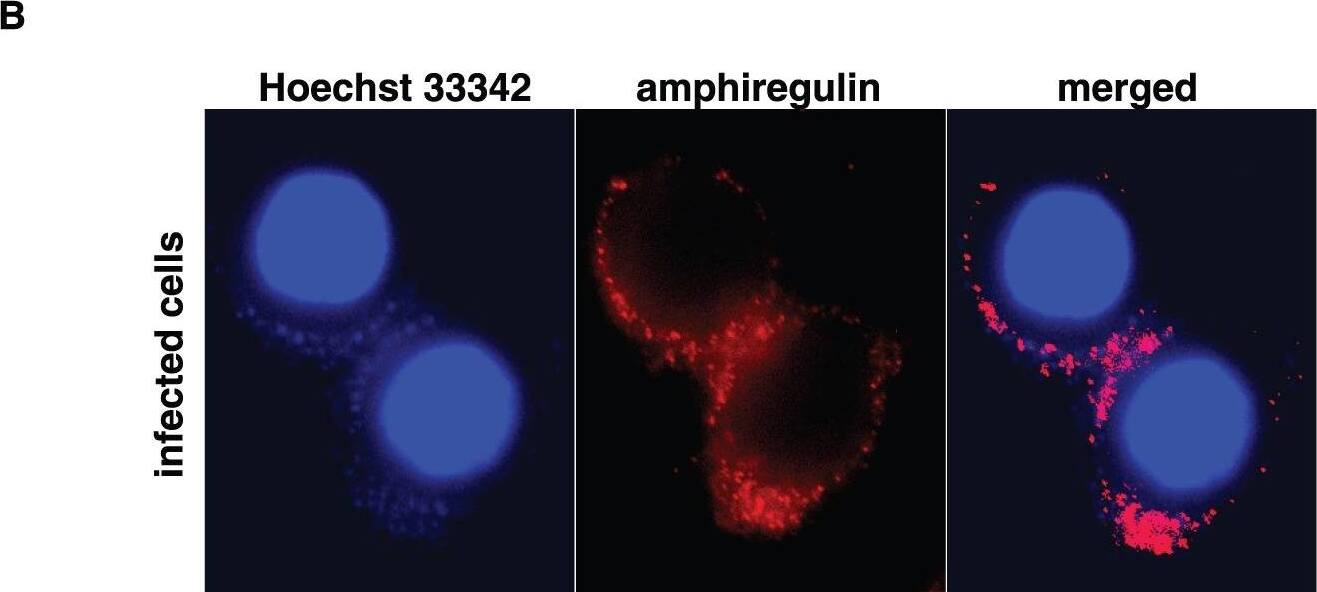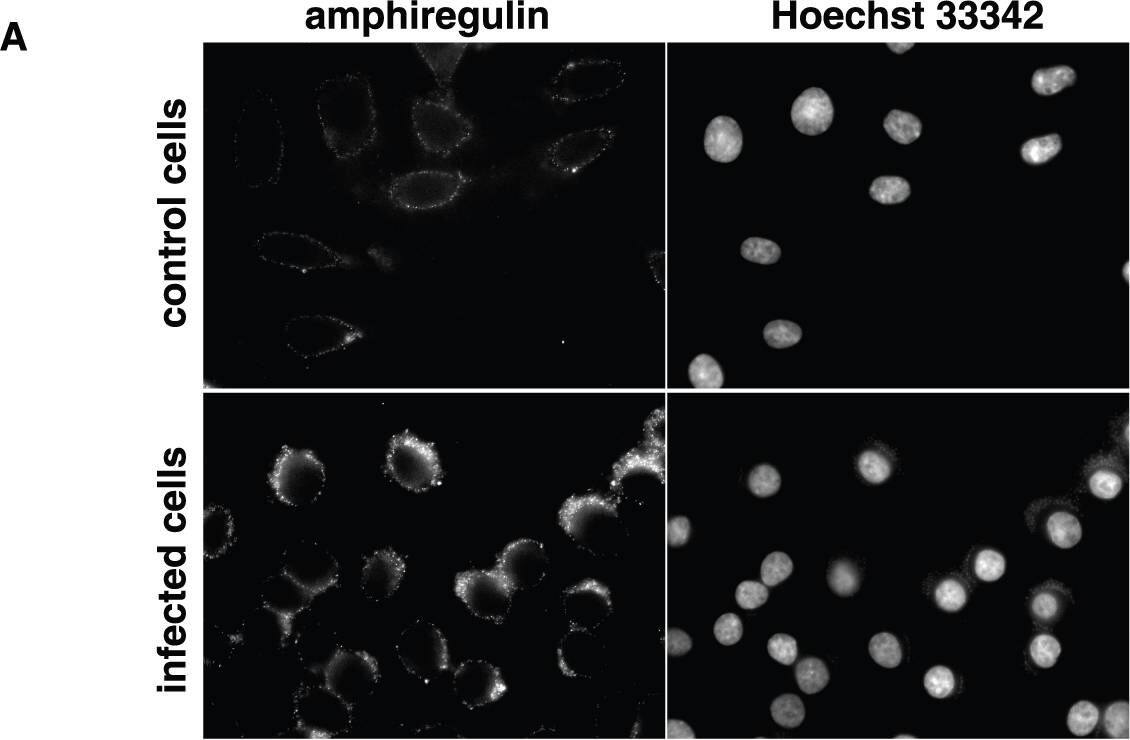Human Amphiregulin Antibody
R&D Systems, part of Bio-Techne | Catalog # AF262

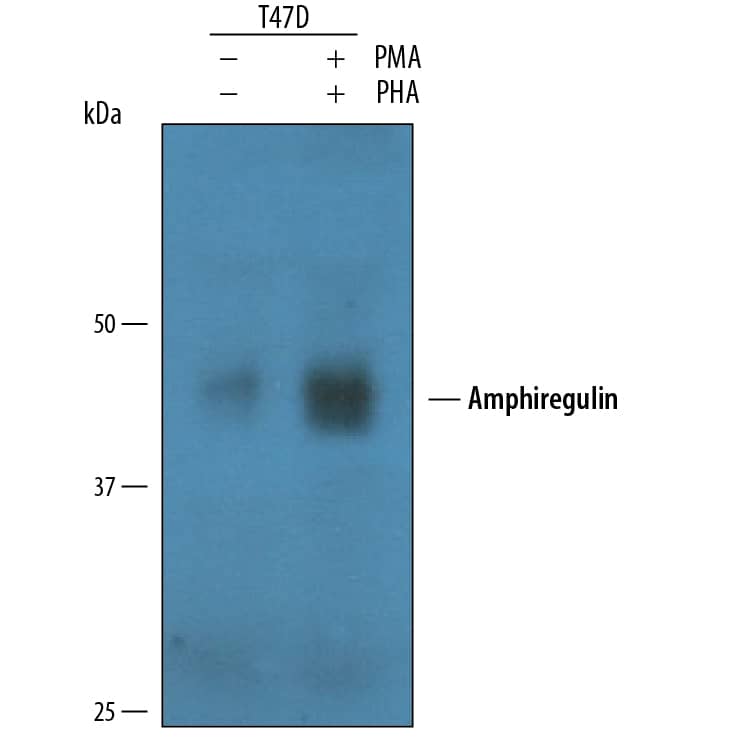
Key Product Details
Validated by
Species Reactivity
Validated:
Cited:
Applications
Validated:
Cited:
Label
Antibody Source
Product Specifications
Immunogen
Val107-Lys184
Accession # P15514
Specificity
Clonality
Host
Isotype
Endotoxin Level
Scientific Data Images for Human Amphiregulin Antibody
Detection of Human Amphiregulin by Western Blot.
Western blot shows conditioned media from T47D human breast cancer cell line untreated (-) or treated (+) with PMA and PHA for 3 days. PVDF membrane was probed with 1 µg/mL of Goat Anti-Human Amphiregulin Antigen Affinity-purified Polyclonal Antibody (Catalog # AF262) followed by HRP-conjugated Anti-Goat IgG Secondary Antibody (Catalog # HAF109). A specific band was detected for Amphiregulin at approximately 45 kDa (as indicated). This experiment was conducted under reducing conditions and using Immunoblot Buffer Group 1.Amphiregulin in MCF‑7 Human Cell Line.
Amphiregulin was detected in immersion fixed MCF-7 human breast cancer cell line using Goat Anti-Human Amphiregulin Antigen Affinity-purified Poly-clonal Antibody (Catalog # AF262) at 10 µg/mL for 3 hours at room temperature. Cells were stained using the NorthernLights™ 557-conjugated Anti-Goat IgG Secondary Antibody (yellow; Catalog # NL001) and counter-stained with DAPI (blue). View our protocol for Fluorescent ICC Staining of Cells on Coverslips.Amphiregulin in Human Breast.
Amphiregulin was detected in immersion fixed paraffin-embedded sections of human breast using Goat Anti-Human Amphiregulin Antigen Affinity-purified Polyclonal Antibody (Catalog # AF262) at 15 µg/mL overnight at 4 °C. Tissue was stained using the Anti-Goat HRP-DAB Cell & Tissue Staining Kit (brown; Catalog # CTS008) and counterstained with hematoxylin (blue). Lower panel shows a lack of labeling if primary antibodies are omitted and tissue is stained only with secondary antibody followed by incubation with detection reagents. View our protocol for Chromogenic IHC Staining of Paraffin-embedded Tissue Sections.Applications for Human Amphiregulin Antibody
Immunocytochemistry
Sample: Immersion fixed MCF-7 human breast cancer cell line
Immunohistochemistry
Sample: Immersion fixed paraffin-embedded sections of human breast
Western Blot
Sample: T47D human breast cancer cell line treated with PMA and PHA
Neutralization
Reviewed Applications
Read 1 review rated 5 using AF262 in the following applications:
Formulation, Preparation, and Storage
Purification
Reconstitution
Formulation
Shipping
Stability & Storage
- 12 months from date of receipt, -20 to -70 °C as supplied.
- 1 month, 2 to 8 °C under sterile conditions after reconstitution.
- 6 months, -20 to -70 °C under sterile conditions after reconstitution.
Background: Amphiregulin
Amphiregulin (AR) is a member of the EGF family of cytokines which is comprised of at least ten proteins including EGF, TGF-alpha, HB-EGF, and the various heregulins. All of these cytokines are synthesized as transmembrane precursors and are characterized by the presence of one or several EGF structural units in their extracellular domain. The soluble forms of these cytokines are released by proteolytic cleavage. Amphiregulin was originally isolated from the conditioned media of a PMA-treated MCF-7 human breast carcinoma cell line. The AR cDNA encodes a 252 amino acid (aa) residue transmembrane precursor. Multiple forms of native AR containing either 78 or 84 aa residues and both N- and O-linked oligosaccharides have been found. Amphiregulin mRNA expression can be detected in numerous carcinoma cell lines and the epithelial cells of various human tissues including colon, stomach, breast, ovary, kidney, etc.
Human AR stimulates the proliferation of various human and mouse keratinocytes, mammary epithelial cells and some fibroblasts. AR is also a growth inhibitor for various tumor cell lines. In certain colon carcinoma cell lines, AR has been shown to be an autocrine growth factor. Amphiregulin can bind to the EGF receptor. It has been suggested that in certain cell types, AR bioactivity may be mediated through the EGF receptor. The 98 aa residue long form of recombinant amphiregulin has shown to be approximately 5 - 10 fold more active than the 78 aa residue form of recombinant AR in an in vitro proliferation assay using Balb/3T3 fibroblasts.
Additional Amphiregulin Products
Product Documents for Human Amphiregulin Antibody
Product Specific Notices for Human Amphiregulin Antibody
For research use only
